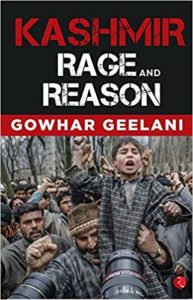 Kashmir is glorified the world over as paradise on the earth for its scenic beauty, serene valleys, calm and fresh waters, and colourful flora and fauna. But, beyond the gaze of this matrix lies a narrative of pains, sufferings, and broken promises. Caught in the whirlpool of hypersensitive political environs, the Kashmir imbroglio refuses to abate and has assumed multiple forms of uncertainty and chaos with the passage of time.
Kashmir is glorified the world over as paradise on the earth for its scenic beauty, serene valleys, calm and fresh waters, and colourful flora and fauna. But, beyond the gaze of this matrix lies a narrative of pains, sufferings, and broken promises. Caught in the whirlpool of hypersensitive political environs, the Kashmir imbroglio refuses to abate and has assumed multiple forms of uncertainty and chaos with the passage of time.
Many theories have been put forth by the political pundits within and outside the valley, but those theories go astray and turn rudimentary within the framework of time. Like elsewhere, writings on the Kashmir imbroglio were minuscule until the narrative of Basharat Peer’s Curfewed Night caught the attention of the readers worldwide regarding the Kashmir problem and gave impetus to further narratives and perspectives on Kashmir which subsequently assumed some weight and authors began to write and rewrite stories on Kashmir.
Kashmir: Rage and Reason by Gowhar Geelani is a fresh narrative on Kashmir which was recently released after publication by Rupa Publications, New Delhi. The book offers fresh insights about a number of themes about Kashmiri nationalism; resistance of the new age and rebellion after the demise of militant commander Burhan Muzaffar Wani in July, 2016. The book is divided into ten chapters, each dealing with a different theme lucidly.
Chapter 1 of the book describes the killing of rebel commander Burhan Wani on 8 July 2016. Burhan Wani became a phenomenon during the years of his militant affiliation. Notably, among the tools used by Wani was social media to further his cause. After Wani’s death militancy was revived.
Chapter 2, “Why Tral Bleeds Green,” the author narrates a series of events that venerate militants.
Chapter 3 examines the struggle in Kashmir, whether vying for homeland or caliphate. The author argues that the struggle of Kashmiris is for political and economic rights, justice, and dignity that predate the birth of India and Pakistan. According to Geelani, it is important to contextualise and historicize the struggle of Kashmiris for independence which can be traced to the 16th century when it was taken over by the Mughals. The author writes that Kashmiri pandits were driven out of the valley by governor Jagmohan. Nonetheless, those who remained back in Kashmir continued to live as brothers and sisters.
In chapter 4, “A nationalism of multiple identities,” the author argues that multiple identities have played a role in rallying public opinion in J&K.The first mobilisation of masses was against Dogra rule in 1931. The 1987 elections are claimed to have been rigged to thwart the rise of the MUF (Muslim United Front), which caused an eruption of militancy in Kashmir.
In chapter 5, “Violence to Non-Violence: A lost opportunity?,” Geelani argues that violence that ravages the state emanates from New Delhi, to which the current generation bears witness. The majority of people in Kashmir are involved in a battle for their unique identity and existence. Preaching peace to Kashmiris in the current atmosphere is considered invective.
In chapter 6 under the theme “A New Language of Resistance,” the author writes about the development of intellectual and narrative resistance in Kashmir, whose outcome is resilience through creative forms of defiance. Words are weapons, so is memory.
Chapter 7, “Hell in Paradise,” narrates the author’s observation of crackdowns, civilian killings, torture, and the exodus of Kashmiri Hindu pandits. Geelani explores the recreation of a communal bond among Kashmiri Muslims and Pandits.
In chapter 8, the author says that truth in Kashmir is overlaid with competing narratives and hermeneutics. Working as journalist is a tough job. Indian journalists, barring a few, have lost their credibility in Kashmir. Indian media provides one-sided coverage and the masses of mainland India have been misguided about the whole situation.
In Chapter 9, the author notes that the world has yet to take cognizance of the Kashmir conflict. Religion, nationalism, cultural and other identities are key to understand the Kashmir imbroglio. For the peace and prosperity of the region, peaceful negotiation is the sine-qua-non condition for its resolution.
The last chapter of the book titled “A Leadership Crisis” tells that pro-Delhi politics indulges in doublespeak in Kashmir. Pro-India politics has severely eroded its credibility in Kashmir. The author ascribes this to the lack of political will and statesmanship in New Delhi, Islamabad, and Srinagar to the current problem. Statesmanship is necessary according to the author for a crisis resolution in Kashmir.
The book has focussed on few major topics; however, other topics regarding political uncertainty also deserve equal attention. Geelani’s Kashmir is articulate and passionate, helping the reader to understand Kashmir in the current global geopolitical context. The book is a must read for those seeking an insight into Kashmir.










